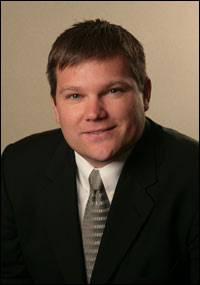NLRB policy changes as unions decline
By: WISCONSIN LAW JOURNAL STAFF//February 8, 2011//
Timothy C. Kamin
Labored Relations

In January, as the U.S. Bureau of Labor Statistics reported that the union membership rate among U.S. workers continued to decline in 2010, the new National Labor Relations Board (“NLRB”) adopted policies designed to facilitate union organizing.
According to the Bureau, the unionization rate dropped to 11.9 percent of workers in 2010 as the total number of unionized workers fell to 14.7 million. This represents a significant decline from the 2009 rate of 12.3 percent, or 15.3 million workers. While the unionization rate for government employees remains relatively high at 36 percent, the rate for private sector workers fell to just 6.9 percent. A long, steady decline in union membership has taken place over several decades, with union membership estimated to have peaked in 1954 at nearly 28 percent of the total workforce and then declined to below 20 percent in the early 1980s and to less than 12 percent in 2010.
The continuing decline is likely due to a combination of contributing factors. U.S. job losses due to global competition have hit typically unionized industries the hardest, such as manufacturing. Workers today receive extensive workplace protections without the need for union representation through positive law, such as antidiscrimination laws, health and safety regulation, minimum wage and overtime compensation, equal pay, family and medical leave, and benefits continuation. Employers increasingly are avoiding unionization through active campaigning and/or by establishing more satisfying work conditions that make unionization less attractive to workers.
Amid this decline in union membership, the NLRB is advancing policies designed to support and encourage union organizing. Most notably, on Dec. 22, 2010, the Federal Register published a Notice of Proposed Rulemaking that would require all employers subject to the NLRB’s jurisdiction to post within their workplace a notice to employees of their rights under the National Labor Relations Act (NLRA), including the right to organize and join a union, to bargain collectively, and to engage in strikes, picketing and other protected activities. The proposed Notice would also advise employees of the NLRA’s restrictions on the employer’s right to monitor or regulate such activities. The proposed rule essentially would extend a recently implemented rule requiring such posting by federal contractors to all employers subject to the NLRB’s jurisdiction. The proposed rule is currently in its 60-day public comment period and will likely result in the issuance of a final rule before summer 2011.
In addition to the proposed rule, the NLRB’s General Counsel has announced policy stances designed to protect and promote union organizing. In memoranda issued in September and December 2010, acting General Counsel Lafe Solomon, the NLRB’s chief investigator and prosecutor, instructed NLRB Regional Directors and officers to consider seeking additional remedies in so-called “nip-in-the-bud” cases, in which it is alleged that an employer has discharged an employee-organizer as a means of derailing an organizing effort. The memoranda announced increased and streamlined efforts to obtain preliminary injunctive relief in such cases, as well as the imposition of previously rare remedies such as requiring public reading of notices of employee rights by company executives, granting the union access to company bulletin boards and employee names and addresses, or even granting the union access to employer facilities to address employees.
It remains to be seen whether the current shift in NLRB policy will stem the downward trend in union membership, but it is apparent that the Obama NLRB will continue to implement an agenda to encourage and nurture union organizing efforts.
Timothy C. Kamin, is an attorney with Krukowski & Costello in Milwaukee, representing management exclusively in labor law matters, including unfair labor practice and representation proceedings before the National Labor Relations Board, in collective bargaining negotiations and grievance arbitration, and assisting employers in responding to union organizing campaigns. He can be reached at [email protected].
Legal News
- Some State Bar diversity participants walk away from program
- Wisconsin court issues arrest warrant ‘in error’ for Minocqua Brewing owner
- Iranian nationals charged cyber campaign targeting U.S. Companies
- Facing mostly white juries, are Milwaukee County defendants of color truly judged by their peers?
- Milwaukee Mayor speaks in D.C. Tuesday at White House water summit
- Chicago man sentenced to prison after being caught with ‘Trump Gun’
- FTC bans non-competes
- Gov. Evers seeks applicants for Dane County Circuit Court
- Milwaukee man charged in dismemberment death pleads not guilty
- Democratic-led states lead ban on the book ban
- UW Madison Professor: America’s child care crisis is holding back moms without college degrees
- History made in Trump New York trial opening statements
WLJ People
- Power 30 Personal Injury Attorneys – Russell Nicolet
- Power 30 Personal Injury Attorneys – Benjamin Nicolet
- Power 30 Personal Injury Attorneys – Dustin T. Woehl
- Power 30 Personal Injury Attorneys – Katherine Metzger
- Power 30 Personal Injury Attorneys – Joseph Ryan
- Power 30 Personal Injury Attorneys – James M. Ryan
- Power 30 Personal Injury Attorneys – Dana Wachs
- Power 30 Personal Injury Attorneys – Mark L. Thomsen
- Power 30 Personal Injury Attorneys – Matthew Lein
- Power 30 Personal Injury Attorneys – Jeffrey A. Pitman
- Power 30 Personal Injury Attorneys – William Pemberton
- Power 30 Personal Injury Attorneys – Howard S. Sicula








